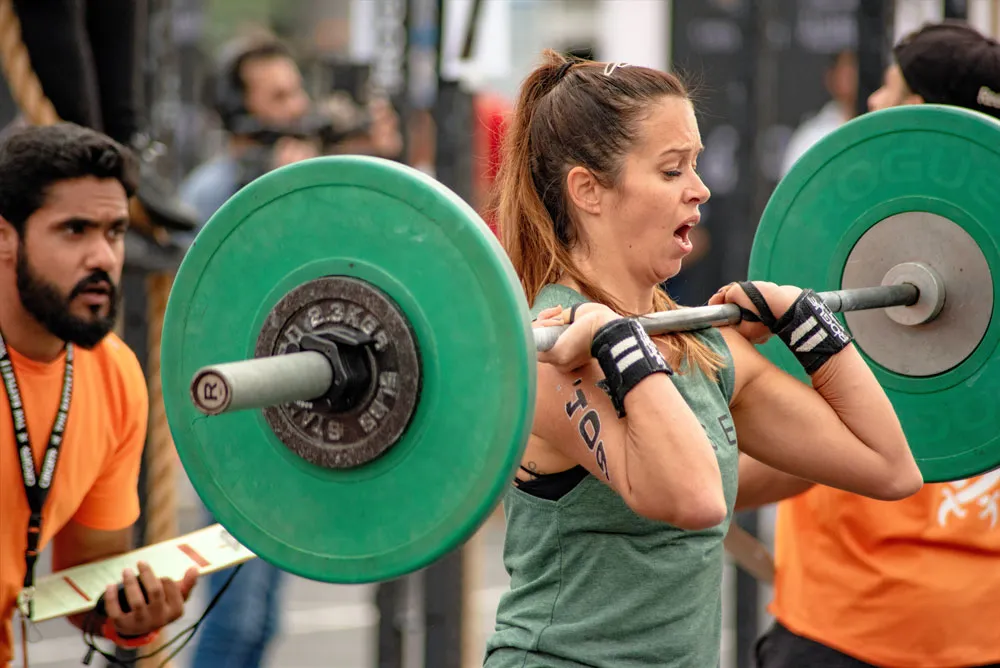The 2022 Crossfit Open is fast approaching, with the first workout happening in just a few short weeks on February 24th! If you’re looking to give your best performance ever, you’ll want to make sure that you are thoroughly prepared for the workouts to come. And today, we are going to go over exactly how to do this!
When coming up with a strategy to prepare yourself for the Open, there are two main goals that we need to address:
- Improve our work capacity to handle the physical demands of the Open workouts
- Improve our efficiency with the movements that are most likely to show up in the workouts
The first step to preparing for the Open is to build up our work capacity over time. What this means is that we need to gradually increase the volume of training that we’re doing (number of workouts per week) and the intensity of the workouts (how hard/taxing they are). The number one mistake that we see most Crossfitters make when preparing for the Open is they wait until the last minute and then quickly ramp up their training volume, which leaves them feeling burnt out, and sometimes even injured.
Instead, what you should do is aim to gradually increase your training volume and intensity over at least a month, if not 2-3 months. By doing this, you give yourself a much better chance to actually improve your strength, endurance, power etc, and greatly reduce your risk of developing an injury.
To do this, we recommend that you start 1-3 months before the Open, and aim to increase volume/intensity by about 10% or so from week to week. So, if you were doing 3 Crossfit workouts per week, we don’t want you to suddenly start doing 5-6 per week for the few weeks leading up to the Open. Instead, we would want you to do 3.5 workouts per week (ie your 3 main workouts and then a little accessory work), for a week or so, then bump it up to 4 per week, then 4.5 (ie 4 main workouts and some accessory work), until you reach your ideal training volume.
Similarly, you can also increase training intensity in this manner. A great way to track and increase this is by using something called session RPE (rating of perceived exertion), or sRPE. Session RPE is a way to measure how hard a given training session was. The best way to do this is to rest for 5-10 minutes after your training session, and then determine how hard you thought the workout was on a 0-10 scale. 0=incredibly easy and 10=the hardest effort you could have done. Once you figure out the RPE rating, you multiply it by the number of minutes that you were training (outside of your general warm up). So if you rated the session as an RPE of 8, and you were training for 45 minutes, your sRPE would be 45×8=360.
Just like with training volume, you can aim to increase this by about 10% or so from week to week by gradually increasing the effort that you put into each workout.
The next step is to train the movements that you will most likely see in the workouts. You can be as fit as you have ever been, but if you aren’t proficient with the movements you have to be doing, your performance is going to suffer.
Looking back at previous Opens, there are certain exercises which appear very frequently. These movements tend to be gymnastic in nature, as they are usually more accessible for people than things like pistol squats and full snatches.
The movements that tend to appear most frequently in the Open are:
- Toes to bar
- Double unders
- Chest-to-bar pull ups
- Thrusters
- Muscle ups
Aside from these, you will also want to be proficient in:
- Many forms of squatting
- Deadlifts
- Burpees
- Olympic lifts (snatches more commonly than cleans)
- Box jumps
- Wall balls
One of the best ways to build your proficiency with these movements is to try to work them into any secondary training sessions you’re doing/adding in to the week, as well as dedicating 10-15 minutes of skill work before or after your training session (before is probably best, as you’ll still be “fresh,” which is better for motor learning.
If you use these two strategies, you’ll have your best Open performance ever!
If you’re dealing with a pain or injury that is limiting your CrossFit performance, click the button below to request a call with our team to see if we can help you out!



